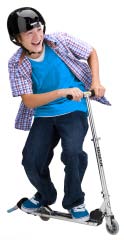Despite all indications that the CPSC was really stepping up and setting tough standards on the levels of cadmium in children’s products– today the agency backed down. They are suggesting that the industry self-enforce. Hmmmm? How well did that work out the last time when we were talking about lead. We are especially concerned that children’s jewelry (that often finds its way into the mouth) is full of cadmium (instead of lead).
Here is an excerpt from the press release we received from the non-profit group Center for Environmental Health:
“Today’s announcement falls far short of what is needed to end this health threat to children,” said Michael Green, Executive Director of CEH. “California has adopted a sensible standard that should serve as a national model for limits on cadmium in children’s products. Sadly, if it goes forward, CPSC’s standard would be a step backwards for children’s health.”
In September, Governor Schwarzenegger signed into law legislation banning sales of children’s jewelry that contain more than 300 parts per million (ppm) total cadmium. In advocating for the law, which had bipartisan and industry support, CEH noted that a standard based on the total amount of cadmium – and not the amount extracted in a lab solution – is more health protective for children, more enforceable for government regulators, and less expensive and less cumbersome for industry to adopt.
CEH lead testing of thousands of toys and children’s products since 2008 has demonstrated that the federal standard – based on the total lead content – has been highly successful in protecting children and meeting industry’s need for predictable and achievable regulations. Despite this successful regulatory approach and California’s legislative approach, CPSC today announced that it is aiming to create a federal standard based on the amount of cadmium extracted from children’s items.
CEH notes that a total content standard is more appropriate for a cadmium rule because:
It’s safer for children: testing products using an extraction test at the time of production fails to account for normal wear-and-tear, which can dramatically change the amount of the toxic metal that could be released; total content testing avoids this problem, since the total amount of the toxic metal does not change.
It’s more enforceable: total content testing is more objective and repeatable than extraction testing, which is subject to much more variability and error.
It’s less costly and less cumbersome for industry: producers of children’s products can order and test raw materials for total content before fabricating products, saving them time and resources. In most cases, extraction testing is only valid on finished products, so producers may not know that a product fails testing until after the product is ready for marketing.
CEH also notes that inexpensive screening by x-ray fluorescence (XRF) analyzers for cadmium is widely available and already in use by some toy and children’s products companies. Yet such testing may be useless for meeting an extraction standard.
Earlier this year, CEH findings led to the group’s initiating the nation’s first-ever legal challenge to cadmium in jewelry. The nonprofit has ongoing litigation <http://www.ceh.org/index.php?option=com_content&task=view&id=440&Itemid=166> for sales of cadmium-tainted jewelry against leading major retailers, including Walmart, Saks, Rainbow and several others. CEH and other groups have also petitioned CPSC and the Environmental Protection Agency, urging them to address the issue of cadmium in children’s products. In an EPA response this August, the agency suggested it would “…work closely with CPSC to determine the most effective means for addressing cadmium in toy metal jewelry and other consumer products, and to determine if action by CPSC should have precedence.”


